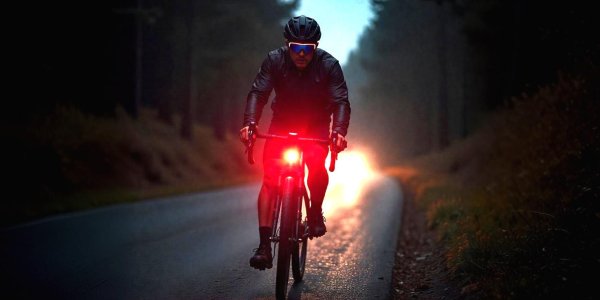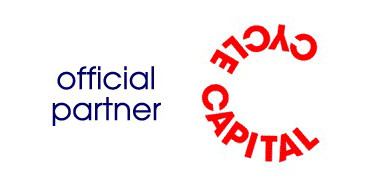Bicycle lighting: time for a European quality mark?

It is the well-known thorn in the eyes of many cyclists: the blinding LED bicycle lighting. Is it time for a mandatory quality mark for bicycle lighting in the EU?
Ouch! Blinding bicycle lighting is an almost painful experience in places where there is hardly any ambient lighting. The bright white light of the headlight burns in the eyes, for a few seconds you can no longer see anything of the road or the surroundings. And worse still: often the beam of the headlight does not so much shine on the road, but straight ahead. The only thing the brightly lit cyclist can do is ride straight ahead and hope that he or she does not collide with some obstacle.
And what also causes surprise and irritation: why doesn’t the ‘blinder’ aim the beam of the headlight at the road, because he or she must also be bothered by other blinders? Mostly, there is hardly any response to shouts, sighs and groans from the oncoming cyclist. The blinder rides stoically on, to blind yet another oncoming rider.
Few rules
Should the government or police tackle and fine the blinder in such a case? If you look at – in this case – Dutch legislation, you will see a point to do so: bicycle lighting may not blind other road users. But in practice, nothing is ever done about this, and it is unclear when exactly bicycle lighting is defective.
There are no specific requirements for bicycle lighting, such as a maximum number of lumens (the total amount of light that a light source emits) or number of lux (the amount of light on a certain surface). The law even stipulates that the bicycle lamp must shine straight ahead, and that can be right in the face of the oncoming driver.
Furthermore, there are major differences in the way in which the light is distributed (via a beam or diffuse distribution) and the ambient light also plays a role. Within the illuminated area of towns and villages, you mainly want to be seen, while in the dark countryside and in the dark forest, you mainly want to see the road or path. Within towns and villages, you can cycle perfectly well with a lamp of 100 to 500 lumens, while in pitch darkness you need a lamp of perhaps 800 to 1000 lumens.
German quality mark
Fortunately, there is a solution: in Germany, bicycle lighting must comply with the StVZO standards. This sets rules for lighting in two zones: relatively weak light in the upper zone and brighter bundled light in the lower zone. This is also described as a cut-off, a boundary between bright and weak lighting. The lighting in the upper zone is a maximum of 2 lux, the brightest point below the cut-off is a minimum of 10 lux. Ideal: the cyclist is visible but does not blind oncoming traffic, and can see the road ahead of him well.
In the Netherlands, there is a similar quality mark: the RAI Bicycle Lighting Quality Mark (RKF). This label follows the same technical requirements as the German StVZO, but it is not mandatory. Isn’t it time for stricter regulations on bicycle lighting?
Remco Tekstra, Bicycle Section Manager at the RAI Association, is clear on this: “Yes, we’ve been advocating for clear technical standards for years — including through the RKF label. In the past, glare wasn’t really an issue: the old dynamo with an incandescent bulb simply wasn’t powerful enough to cause this. But with the advent of LED lighting and the e-bike as a powerful energy source, the technical possibilities are virtually limitless. That’s exactly why there is now a greater need than ever for legally defined standards. To be clear: many bicycle lights already meet the common StVZO standard, but unfortunately, a significant number still do not — with all the risks that entails.”
European regulation
Of course, it would be logical if all bicycle and e-bike lights in the EU complied with the StVZO/RKF standards. But it’s a bit more complicated, as bicycles and electric bikes fall into different categories, and there isn’t even a uniform European regulation for regular (non-electric) bicycles. For example, in the Netherlands, bicycles fall under the General Product Safety Directive (APV) of the Netherlands.
For e-bikes, which fall into the EPAC (Electrically Power Assisted Cycle) category, there is a European directive — the EN 15194 standard. However, this only states that EPAC lighting must not cause glare, without setting any specific technical requirements.
Tekstra: “In practical terms, a dedicated European lighting regulation for both bicycles and e-bikes is difficult. But let’s at least start in the Netherlands by introducing rules to eliminate blinding bicycle lights.”

Stefan Maas
Stefan is an enthusiastic cyclist, blogger, co-organizer of the IBTC (International Bike & hike Tourism Conference), and a staff member at Hicle.
